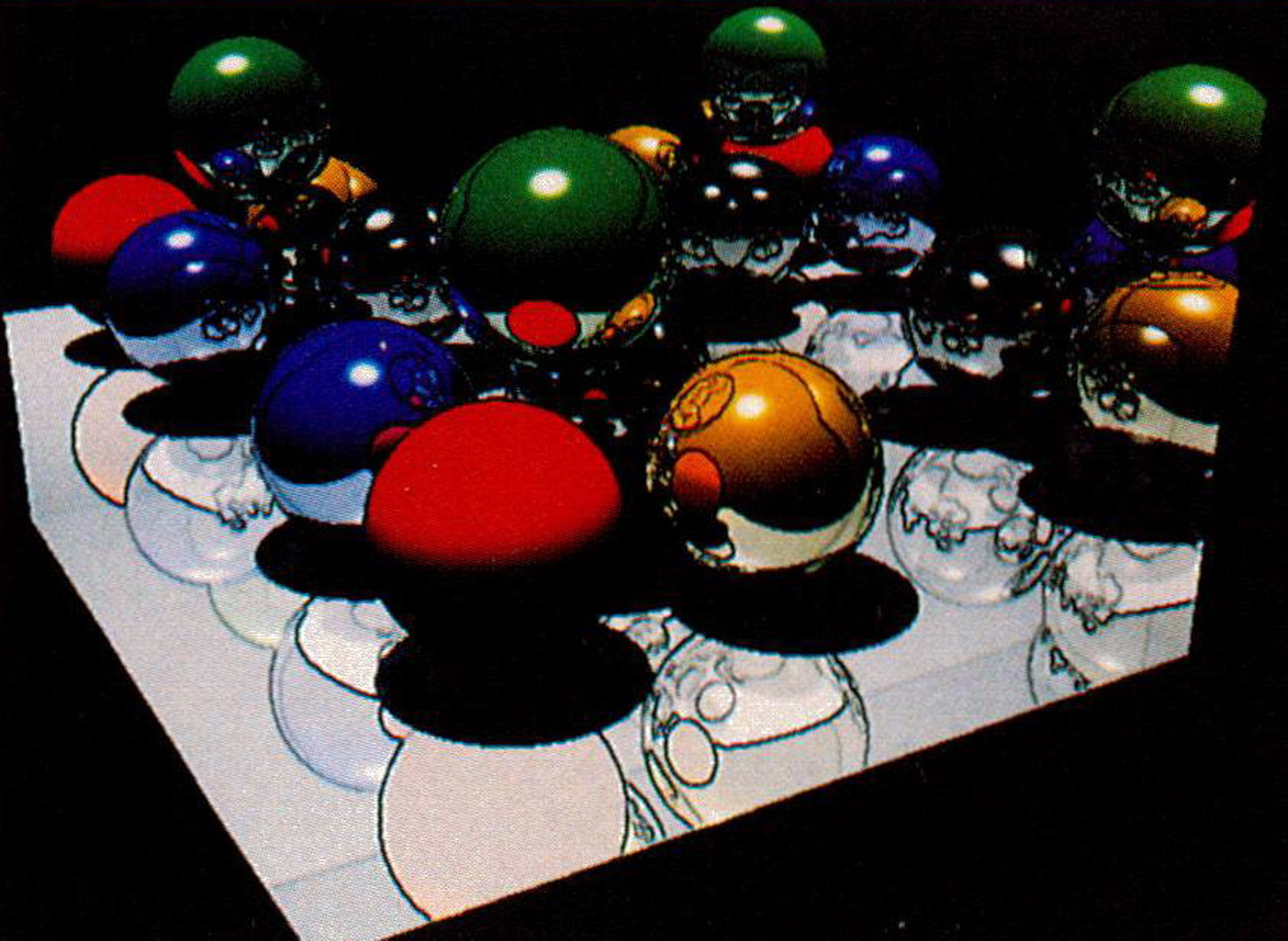“Comprehensible rendering of 3D shapes” by Saito and Takahashi
Conference:
Type(s):
Title:
- Comprehensible rendering of 3D shapes
Session/Category Title: Non Photo Realistic Rendering
Presenter(s)/Author(s):
Moderator(s):
Abstract:
We propose a new rendering technique that produces 3-D images with enhanced visual comprehensibility. Shape features can be readily understood if certain geometric properties are enhanced. To achieve this, we develop drawing algorithms for discontinuities, edges, contour lines, and curved hatching. All of them are realized with 2-D image processing operations instead of line tracking processes, so that they can be efficiently combined with conventional surface rendering algorithms.Data about the geometric properties of the surfaces are preserved as Geometric Buffers (G-buffers). Each G-buffer contains one geometric property such as the depth or the normal vector of each pixel. By using G-buffers as intermediate results, artificial enhancement processes are separated from geometric processes (projection and hidden surface removal) and physical processes (shading and texture mapping), and performed as postprocesses. This permits a user to rapidly examine various combinations of enhancement techniques without excessive recomputation, and easily obtain the most comprehensible image.Our method can be widely applied for various purposes. Several of these, edge enhancement, line drawing illustrations, topographical maps, medical imaging, and surface analysis, are presented in this paper.
References:
1. Beck, J. M., Farouki, R. T., and Hinds, J. K. Surface Analysis Methods. IEEE Computer Graphics and Applications 6, 12 (1986), 18-36.
2. Carpenter, L. The A-buffer, an Antialiased Hidden Surface Method. Computer Graphics 18, 3 (Proc. SIG- GRAPH ‘S4) (1984), 103-108.
3. Cook, R. L. Shade Trees. Computer Graphics 18, 3 (Proc. SIGGRAPH ‘8~) (1984), 223-231.
4. Crow, F. C. A More Flexible Image Generation Environment. Computer Graphics 16, 3 (Proc. SIG- GRAPH ‘S$) (1982), 9-18.
5. Dickinson, R. R., Bartels, R. II., and Vermeulen, A. H. The Interactive Editing and Contouring of Empirical Fields. IEEE Computer Graphics and Applications 9, 3 (1989), 34-43.
6. Drebin, R. A., Carpenter, L., and Hanrahan, P. Volume Rendering. Computer Graphics 22, 4 (Proc. SIG- GRAPH ‘as) (1988), 55-74.
7. Duff, T. Compositing 3-D Rendering Images. Computer Graphics 19, 3 (Proc. SIGGRAPH ’85) (1985), 41-44.
8. Ghazanfarpour, D., and Peroche, B. A Fast Antialiasing Method with A-Buffer. in Proc. Eurographics ’87 (1987), 503-512.
9. Higashi, M., Kohzen, I. and Nagasaka, J. An Interactive CAD System for Construction of Shapes with High-quality Surface. Ia Computer Applications in Production and Engineering (Proc. CAPE ’83) (1983), 371-390.
10. Higashi, M., Kushimoto, T. and Hosaka, M. On Formulation and Display for Visualizing Features and Evaluating Quality of Free-form Surfaces. In Proc. Eurographics ’90 (to appear).
11. Kondo, K., Kimura, F., and Tajima, T. An Interactive Rendering System with Shading. In Japan Annual Reviews in Electronics, Computers ~ Telecommunications 18, Computer Science and Technologies, Kitagawa, T. (Ed.), Ohmsha and North-Holland, Tokyo, 1988, pp. 255-271.
12. Lorensen, W. E., and Cline, H. E. Marching Cubes: A High Resolution 3D Surface Construction Algorithms. Computer Graphics 21, 4 (Proc. SIGGRAPH ’87) (1987), 163-169.
13. Mammem, A. Transparency and Antialiasing Algorithms Implemented with the Virtual Pixel Maps Techniques. IEEE Computer Graphics and Applications 9, 4 (19s9), 43-55.
14. Nadas, T. and Fournier, A. GRAPE: An Environment to Build Display Processes. Computer Graphics 21, 4 (Proc. SIGGRAPH ’87) (1987), 75-83.
15. Nakamae, E., Ishizaki, T., Nishita, T., and Takita, S. Compositing 3D Images with Antialiasing and Various Shading Effects. IEEE Computer Graphics and Applications 9, 2 (1989), 21-29.
16. Newman, W. M. and Sproull, R. F. Principles of Interactive Computer Graphics, 2nd Ed., McGraw-Hill, 1979.
17. Perlin, K. An Image Synthesizer. Computer Graphics 19, 3 (Proc. SIGGRAPH ’85) (1985), 287-296.
18. Porter, T. and Duff, T. Compositing Digital Images. Computer Graphics 18, 3 (Proc. SIGGRAPH ‘8~) (19s4), 2zz-259.
19. Rosenfeld, A. and Kak, A. C. Digital Picture Processing, 2nd Ed., Academic Press, 1982.
20. Salto, T., Shinya, M., and Takahashi, T. Highlighting Rounded Edges. In New Advances in Computer Graphics (Proc. CG International ’89) (1989), 613-629.
21. Udupa, J. K. Display of Medical Objects and their Interactive Manipulation. In Proc. Graphics Interface ‘S9, (1989), 40-46.
22. Whitted, T. and Weimer, D, M. A Software Testbed for the Development of 3D Raster Graphics Systems. A CM Trans. Graphics 1, 1 (1982), 43-58.




